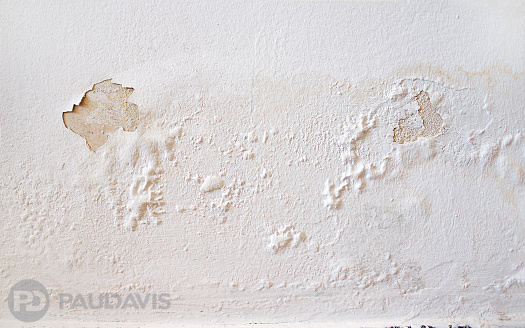
You’ve probably seen mould growing in your home. Mould and mildew build up on your shower curtain or food left sitting in your fridge too long. But what about mould infestations—how do you know if you’re suffering from one of those? While some moulds can be spotted in dark, damp spaces in our homes, others grow behind walls or under carpet, making them far more difficult to detect. Here are a few ways you can identify suspicious signs of indoor mould infestation.
What’s that smell? Often identified by its strong, musty odour, the smell of mould is pungent. Some homeowners confuse the smell for something else because mould may not be visible to them. But mould is very sneaky, growing in places like inside walls and behind wallpaper. If you’re not sure where the musty smell in your home is coming from, it may be time to hire a professional like those at Paul Davis. Specialists at your local Paul Davis company can inspect your home, test for mould, and then determine a plan of action so that the mould can be remediated quickly.
Small trouble spots of mould. These could be early signs of a growing problem. This isn’t always the case, but sometimes a little mould in one corner could mean a lot of mould elsewhere. Remember, mould thrives in dark, damp areas. For instance, if you spot a little mould or water damage in the topmost corners of your home, it could be a sign that you have mould growing in your attic. Be sure to follow the trail to identify how much mould damage you have—and where it starts. If you’ve recently had flooding due to storms or a broken appliance, that could be the cause of mould growth, too. Here are some common places mould grows:
- Bathrooms
- Basements
- Attics
- Window frames
- Caulking
- Ventilation systems
- Drywall and subflooring
- Wallpaper or painted walls
- Carpeting
Family health issues. These can be another strong indicator of mould problems. Often the symptoms you have due to mould can be mistaken for something as simple as seasonal allergies. But if your eyes are itchy and watery, you find yourself blowing your nose more than usual, or your asthma is in overdrive while you’re inside your home or office—mould may be the culprit. Always be aware of your symptoms and when you feel them most. Do they get better when you leave your home? Are they at their worst when you first wake up in the morning?
Identifying signs of indoor mould isn’t difficult. The most important thing to do is remain aware of your surroundings. And if you suspect that mould is causing problems in your home, call the experts at Paul Davis. Because if mould is found, This Is No Time For Second Best™.
